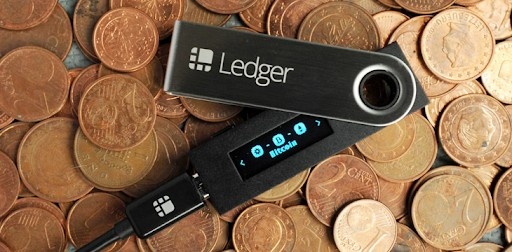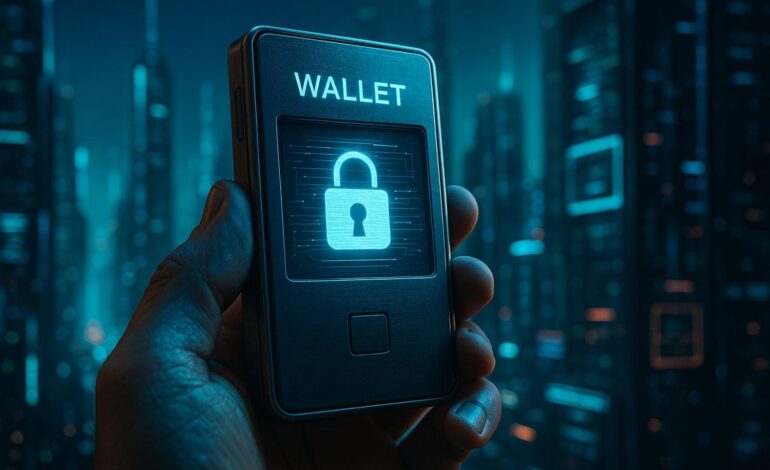Key Insights:
- Every serious investor should learn how to safely store crypto using exchange and self-custody wallets.
- Investors should also understand the difference between hot and cold wallets.
- Hot wallets are easier to access but less secure. Cold wallets are harder to access but a lot more secure.
If you own crypto, one of the most important things you can learn is how to store it safely.
Many beginners keep their assets on an exchange without realizing the risks involved. Crypto wallets help you take control of your funds and protect them from hacks or platform failures.
Understanding the types of wallets and how they work can save you from costly mistakes.
What Does It Mean to Store Crypto Safely?
To store crypto means holding your coins in a wallet that gives you control over your private keys. No more and no less.
Those keys are like digital signatures that prove ownership. This means that if someone gains access to them, they can take your funds away for good. This is why wallet security is the most important part of crypto investing.
There are two main ways to hold your coins.
You can either leave them on an exchange or move them to a self-custody wallet. Each option has its benefits and downsides.
Exchange Wallets versus Self-Custody Wallets
An exchange wallet is provided by platforms like Binance, Coinbase or Kraken. These services store your private keys for you and make it easy to trade quickly.
However, convenience comes at a cost. If the exchange gets hacked or goes offline for any reason, your funds could be locked or lost.
On the other hand, self-custody wallets give you full control. These kinds of wallets help you manage your own private keys. In other words, only you can access your funds.
No third party can interfere or limit access. However, this also means you’re responsible for keeping your keys secure.
Types of Crypto Wallets
Self-custody wallets fall into two categories.
1. Hot wallets
2. Cold wallets.
Both serve different purposes depending on how often you use your crypto and how much security you need.
Hot Wallets
Hot wallets are connected to the internet. This alone makes them convenient but less secure. Some good examples include MetaMask, Trust Wallet and Phantom. They’re great for frequent transactions, staking or interacting with DApps.

Trust Wallet is a good example of a hot wallet | source: Trust Wallet
Because they’re always online, hackers can target them through phishing or malware.
This means that protecting your device with strong passwords and two-factor authentication and avoiding suspicious links can reduce this risk.
Cold Wallets
Cold wallets, on the other hand, stay offline. They offer stronger protection for long-term storage. Hardware wallets like Ledger and Trezor are popular examples, and they store private keys on a physical device disconnected from the internet.

The Ledger is another popular example of a cold wallet | source: CoinGeek
Cold wallets are great for holding large amounts of crypto that you don’t use often. Since they aren’t connected online, the chance of remote attacks is almost zero. However, you need to keep the physical device safe and back up your recovery phrase in a secure place.
Choosing the Right Way to Store Crypto
How you store your crypto depends on your goals and how active you are in the market. If you trade often, a hot wallet may work well with your daily needs. For investors who prefer to hold assets long-term, a cold wallet offers much better protection.
Many people use both. They keep smaller amounts in a hot wallet for quick access and store the rest in a cold wallet for safety. This approach is a great balance between convenience and security.
Setting Up a Wallet the Right Way
When setting up a self-custody wallet, always write down your recovery phrase on paper and store it somewhere private.
Never take screenshots or save it in your phone’s notes app.
If you’re using a hardware wallet, buy directly from the official website to avoid devices that have been tampered with. Once you set it up, test it with a small transaction before transferring large amounts.
Also, avoid sharing wallet details on public forums or social media. Scammers tend to look for new users to trick through fake support messages.
Common Mistakes When Trying to Store Crypto
Many beginners lose funds by overlooking simple steps. Some of the most common mistakes include:
- Forgetting to back up recovery phrases.
- Sending crypto to the wrong blockchain or wallet address.
- Leaving coins on exchanges for too long.
- Falling for fake wallet downloads or phishing emails.
All of this being said, paying attention to these details can make a big difference in keeping your funds safe.
How to Stay Secure Long-Term
Security doesn’t stop after setting up a wallet. You should check your devices regularly for malware and update wallet apps to the latest versions.
You should avoid using public Wi-Fi when managing your crypto and use a VPN for extra protection.
If you plan to hold assets for years, consider using multiple backups stored in separate locations.
Note that paper backups can fade, so be sure to laminate them or use metal plates designed for these wallet recovery phrases.
Overall, learning how to store your crypto the right way puts you in charge of your assets. Exchange wallets offer convenience. However, self-custody wallets provide true ownership.
Hot wallets are flexible, while cold wallets add strong protection.
No system is perfect. Still, taking control of your private keys gives you the freedom that crypto was built for.












